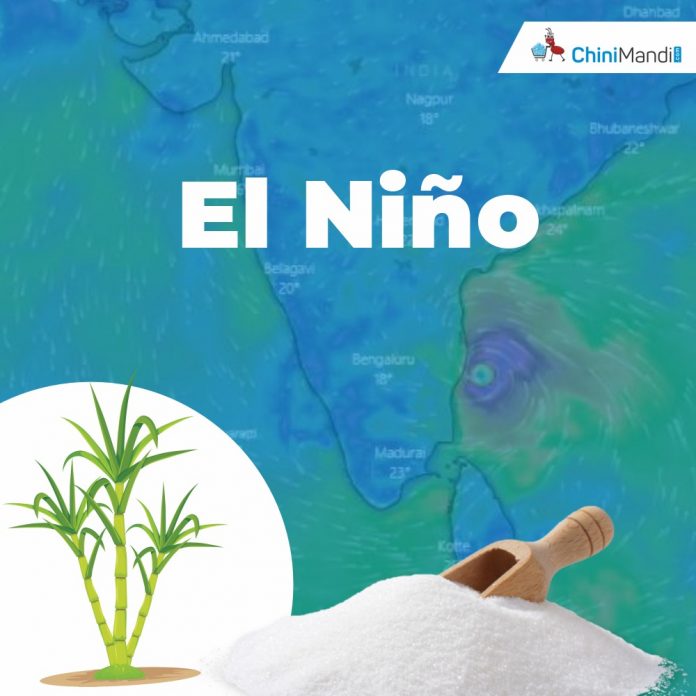El Niño’s potential impact on sugarcane production and prices:
El Niño, a climatic phenomenon characterized by warming ocean temperatures in the Pacific, could cast a shadow on the Indian sugar industry in the coming years. Some sources predict a potential 10% decrease in sugarcane output in India during 2023-24, primarily due to El Niño’s disruption of rainfall patterns. However, it is important to note that this estimate remains unconfirmed and subject to various factors.
Reduced rainfall could lead to water scarcity, impacting sugarcane cultivation and harvesting. This potential decline in production could contribute to a rise in domestic sugar prices, adding to inflationary pressures. However, the actual magnitude of the impact on prices will depend on various factors, including government interventions, global market dynamics, and the final production figures.
Uncertainties regarding export restrictions and ethanol ban:
While the government has implemented a temporary ban on the use of sugarcane juice for ethanol production in the 2023-24 season to prioritize domestic sugar availability, its extension into the 2024-25 season remains uncertain. This decision reflects the delicate balance between maintaining food security and promoting renewable energy goals.
Global market implications and need for evidence-based projections:
El Niño’s impact on the Indian sugar industry could resonate in the global market. Reduced exports from India, coupled with the potential ethanol ban, could contribute to global sugar prices. However, a comprehensive understanding of the global market’s response requires data-driven analysis. Citing official reports, statistics, and projections from credible sources would provide a more accurate picture of the expected impact on prices, production, and trade.
Understanding the rainfall patterns and El Niño’s link to sugarcane:
El Niño’s influence on the Indian monsoon plays a crucial role in sugarcane cultivation. The phenomenon affects the spatial and temporal distribution of rainfall, potentially delaying the monsoon onset, shortening its duration, and causing uneven precipitation across different sugarcane-growing regions. This can lead to water stress and reduced yields.
La Nina: A Potential counterpoint:
While El Niño presents challenges, it’s important to consider the potential influence of La Nina, its opposite phase. La Nina typically brings more rainfall and lower temperatures, potentially leading to higher sugarcane production. Studying the likelihood and timing of La Nina events can provide valuable insights for long-term planning in the industry.
Navigating uncertainties and adapting to change:
The Indian sugar industry faces a complex landscape of uncertainties due to El Niño and evolving government policies. To navigate these challenges and ensure future sustainability, the industry must:
-Invest in research and development to develop drought-resistant sugarcane varieties.
-Strengthen irrigation infrastructure to improve water management and mitigate the effects of water scarcity.
-Explore alternative sweeteners and diversify production to reduce dependence on sugarcane.
-Implement robust risk management strategies to address price volatility and market uncertainties.
-Collaborate with the government and stakeholders to develop sustainable and adaptable solutions.
By embracing proactive adaptation and embracing data-driven decision-making, the Indian sugar industry can navigate the uncertainties posed by El Niño and emerge stronger in the years to come.
Disclaimer: The views and opinions expressed in the article by Dilip Patil, Managing Director of Samarth SSK Ltd., are solely his own.












